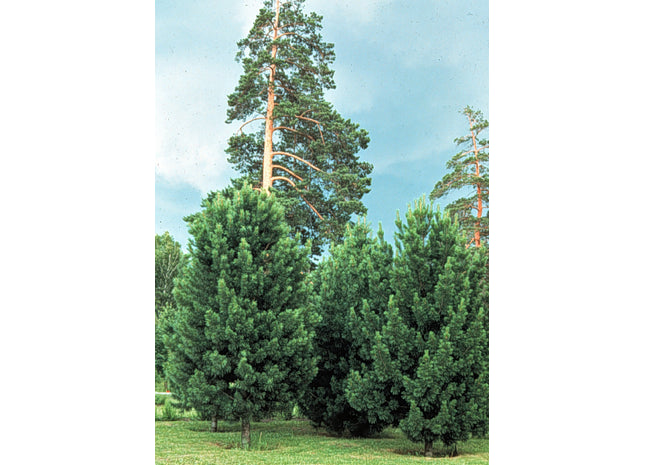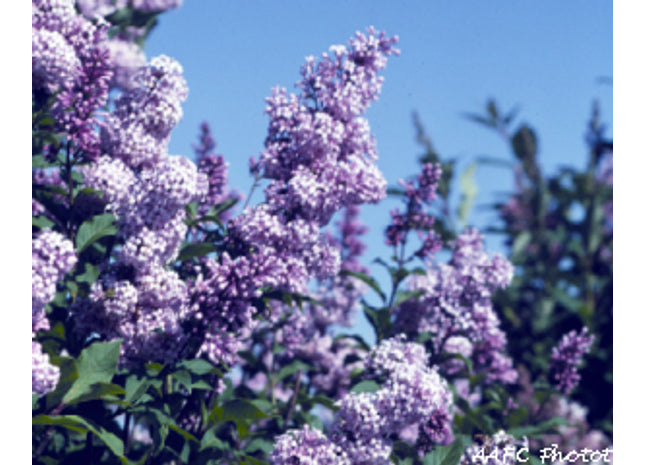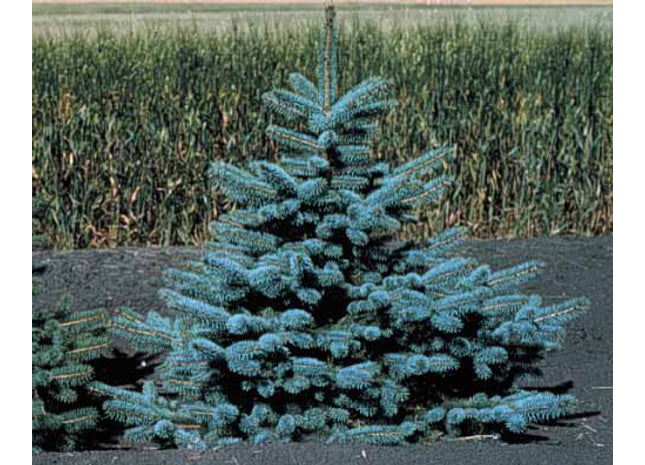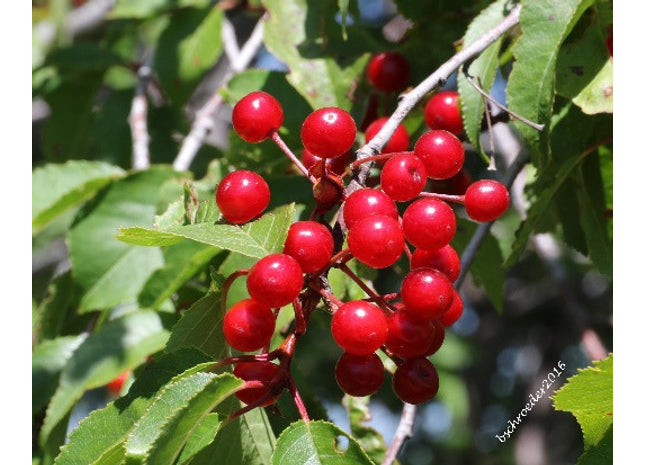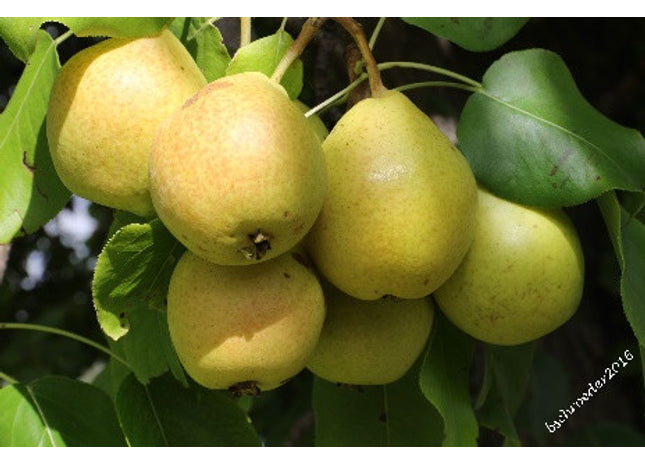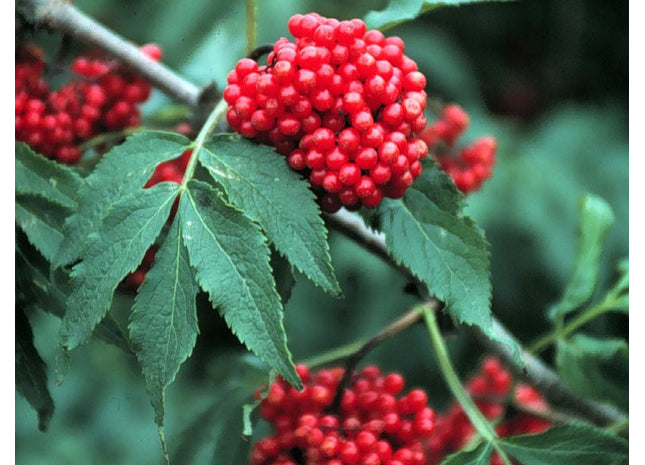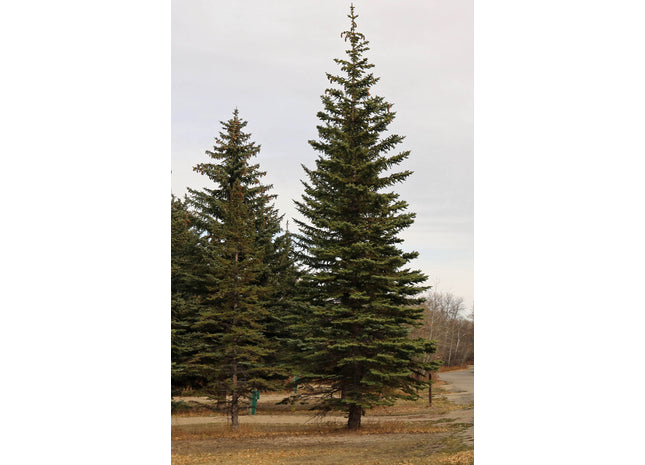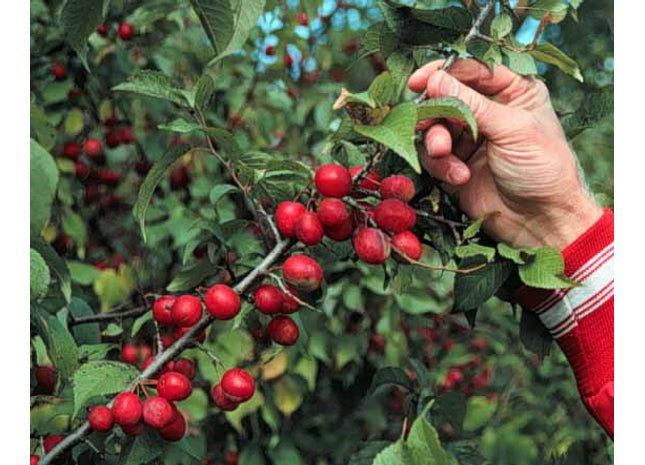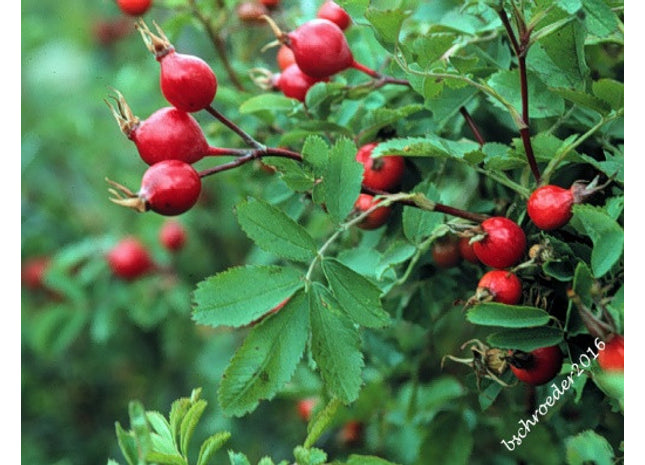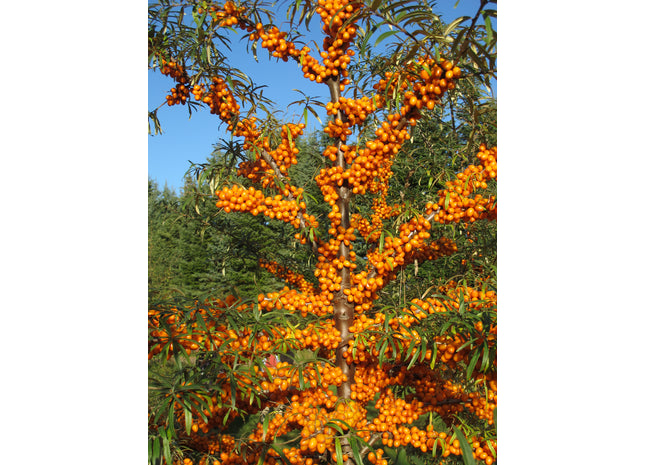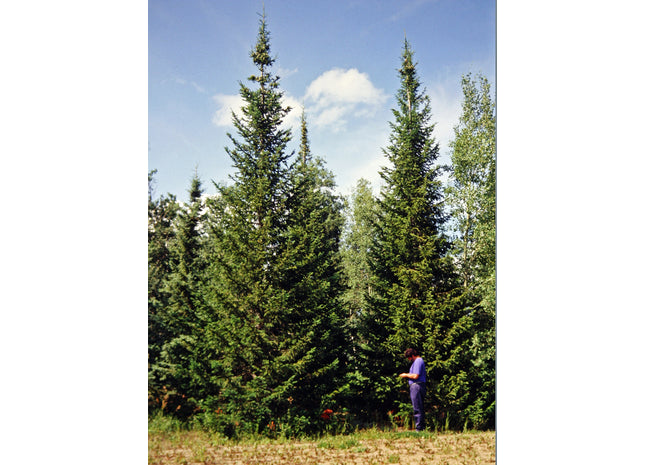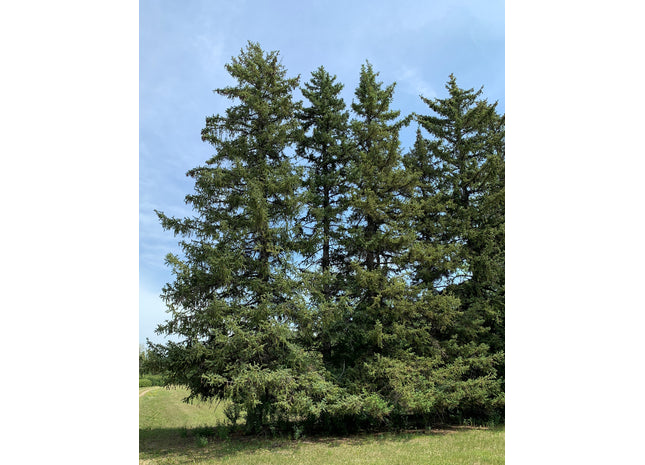Products

'Baikal' Siberian Pine Seed
Latin Name: Pinus sibirica DESCRIPTION Family: Pinaceae Native Range: Native to Russia, specifically the Ural Mountains and Siberia. Seed Source: Siberian pine collection near Indian Head Saskatchewan. Height and Spread: 20m x 8m. Overview: Siberian pines are native to Siberia. The 'Baikal' seed strain originates from a collection made near Lake Baikal in Siberia in 1985. The collection was planted in a seed block near Indian Head, Saskatchewan. They are drought tolerant and our seeds are well adapted to northern temperate regions. The 'Baikal' seed strain has grown very well in southern Saskatchewan. It is ideally adapted for planting in non-boreal regions. Siberian pine grows well in heavy clay soils. Typically it has steady though not fast growth and is very tolerant of severe winter cold, hardy down to at least –60 °C, and also of wind exposure. Unlike other pines Siberian pine drop their needles mid-summer so don't be alarmed if your tree begins to turn shades of yellow from old needles dying in the summer. The needle drop is over after a few weeks Seeds: Yellow-brown and nut-like, 10-12 mm long. Average number of seeds/packet: 60 SEED TREATMENT / SOWING Stratification: Soak in water for 24 hours then warm stratify at 20°C for 60 days in moist sand followed by 120 days at 5°C. Ideal sowing time: Sow stratified seed outdoors in May or non-stratified seed in late August. Sowing instructions: Outdoors - sow 1.0 cm deep, 50 seeds/meter; Greenhouse - sow 3 seeds per cell. Growing conditions: Spring sowing of stratified seed is preferred over fall sowing of non-treated seeds. Alternatively, sow seed indoors then move outdoors in a shaded area during the summer. Sow stratified seeds in individual pots with well-drained potting soil. Push each seed just beneath the soil surface, making sure that it’s in a vertical position with the pointy end facing downward. Place the pots in a sunny window and water thoroughly. Keep the seeds moist and wait, as germination can take a few weeks. Plant seedlings into their permanent position within 2 years after sprouting, and mulch heavily before winter. Agroforestry Value 'Baikal' Siberian pine seeds are tasty and nutritious, they have been harvested and eaten by people for generations. In addition to its abundant crops of tasty nuts, Siberian pine is also valued for its attractive dark green foliage and dense, pyramidal shape. Its slow growth rate makes it a good tree for small gardens.
$20.00 - $25.00

AgroForestry Solutions 'Charlie Edwards' Villosa Lilac Seed
Latin Name: Syringa villosa DESCRIPTION Family: Oleaceae Native Range: Northeastern China Seed Source: Improved seed strain, seed production orchard near Indian Head Saskatchewan. Height and Spread: 4m x 3m Overview: The seed strain was developed for tree planting in the Canadian prairies. It is a composite of parent trees from selected lilac shelterbelts. It is a medium-large, hardy shrub with an oval-shaped crown. It has basal sprouts but does not spread by suckers. It was named in honour of Charlie Edwards assistant superintendent of the Indian Head Forest Nursery Station from 1909 to 1950. Fruit: Seed ripens in a capsule in late summer. Average number of seeds/packet: 450 SEED TREATMENT / SOWING Stratification: Pre-soak seed for 24 hours then stratify in moist sand (10 percent moisture) for 60 days at 5°C. Ideal sowing time: Non-pretreated seed outdoors in September (will germinate the following spring) or stratified seed in spring. Sowing instructions: Sow 1.5 cm deep, 50 seeds/meter; Greenhouse - sow 3 seeds per cell. Growing conditions: The 'Charlie Edwards' seed strain is adapted to most soils and is hardy to zone 2. AGROFORESTRY VALUE 'Charlie Edwards' villosa lilac is used for shelterbelt and hedge planting in field and farmyard shelterbelts. The dense growth habit is well suited for providing wind and snow protection. It provides excellent cover and habitat for songbirds and small mammals. Lilac species are rated excellent for pollen availability. The attractive white/lavender blooms add fragrance and beauty to plantings.
$20.00 - $25.00

Agroforestry Solutions 'Cram' Colorado Spruce Seed
Latin Name: Picea pungens DESCRIPTION Family: Pinaceae Native Range: Native to Rocky Mountain region of United States Seed Source: Colorado spruce in a seed production orchard near Indian Head Saskatchewan. Height and Spread: 18m x 8m Overview: The 'Cram' seed strain was developed specifically for agroforestry planting in non-boreal regions. This seed strain is characterized by a high percentage of silvery-blue needle coloured seedlings, an upright crown form, cold and drought hardiness, and adaptability to a wide range of growing conditions in the aspen parkland. The strain was named in honour of Bill Cram, Indian Head Tree Nursery superintendent from 1958 to 1978. Seeds: Dark brown, winged 2-4 mm long. Average number of seeds/packet: 1,150 SEED TREATMENT / SOWING Stratification: No stratification required. Water soak 24 hours before sowing. Ideal sowing time: Spring; Non-pretreated seed outdoors in May. Sowing instructions: Sow 1.0 cm deep, 50 seeds/meter; Greenhouse - sow 3 seeds per cell. Growing conditions: 'Cram' Colorado spruce grows on a wide variety of soils but favours loamy soils with a pH of 5.0 to 7.0. It is shade tolerant but grows best in a sunny exposure. Agroforestry Value 'Cram' Colorado spruce is used in farmstead shelterbelts. The dense shallow roots make it useful for soil stabilization and erosion control on moist sites. Its dense coniferous crown provides excellent habitat for songbirds and thermal cover for mammals. The silvery-blue foliage makes this seed-propagated cultivar aesthetically pleasing.
$20.00 - $25.00

AgroForestry Solutions 'Crimson' Pin Cherry
Latin Name: Prunus pensylvanica DESCRIPTION Family: Rosaceae Native Range: Native to most of the forested regions of Canada. Seed Source: Pin cherry seed block, near Indian Head Saskatchewan. Height and Spread: 6m x 3m (5 years) Overview: 'Crimson' pin cherry seed strain is adapted to cold temperate dry climates. A pioneer plant quickly colonizing sites this seed strain produces small edible tart cherries. Fruits: A round single-seeded bright red cherry. About 150 seeds. SEED TREATMENT / SOWING Stratification: Pre-soak seed for 24 hours then stratify in moist sand (10 percent moisture) for 120 days at 5°C. Ideal sowing time: Non-pretreated seed outdoors in late September (will germinate the following spring) or stratified seed in spring. Sowing instructions: Outdoors - sow 2.0 cm deep, 50 seeds/meter; Greenhouse - sow 3 seeds per cell. Growing conditions: ’Crimson’ pin cherry grows well on a wide range of soils. As a colonizer, it will flourish on most disturbed sites. It prefers full sunlight. AGROFORESTRY VALUE 'Crimson' pin cherry is used in farmstead and field shelterbelts, Ecobuffers, wildlife habitat plantings. It is an important component of multi-species Ecobuffers, nursing the seedlings of longer-lived species beneath them. Many song and game birds utilize this small tree for food and habitat. The cherries can be preserved as jelly or dried.
$20.00

AgroForestry Solutions 'George Kennedy' Ussurian Pear Seed
Latin Name: Pyrus ussuriensis DESCRIPTION Family: Rosaceae Native Range: Northeast Asia Seed Source: Ussurian pear growing in a seed production orchard near Indian Head Saskatchewan. Height and Spread: 7m x 4m Overview: 'George Kennedy' Ussurian pear is well adapted to cold temperate regions. Its vigorous, dense growth makes it useful for shelterbelts. The attractive flowers and yellow-orange autumn color enhance its aesthetic value. Short, stubby branches (spurs), that are thorn-like, form before developing into another branch. The seed strain was named in honour of George Kennedy an early Tree Inspector at Indian Head Fruits: Pear-shaped and 3-4 cm in diameter with multiple seeds. Ripens in September. Average number of seeds/packet: 200 SEED TREATMENT / SOWING Stratification: Stratify in moist sand (10% moisture) for 90 days at 5°C. Ideal sowing time: Non-pretreated seed outdoors in late September (will germinate the following spring) or stratified seed in spring. Sowing instructions: Outdoors - Sow 2 cm deep and 50 seeds/meter; Greenhouse - sow 3 seeds per cell 1 cm deep. Growing conditions: ‘George Kennedy’ Ussurian pear is well-adapted to most soil types except heavy, poorly drained, and high lime soils. It performs very well on sandy soils. AGROFORESTRY VALUE The 'George Kennedy' seed strain is excellent for field and farmstead shelterbelts, intercropping, reclamation, and wildlife habitat plantings. All plants produce fruit. The fruit is hard, but may be used for jams and jellies and sweetens after a frost.
$20.00 - $25.00

'Guiton' Red Elder Seed
Latin Name: Sambucus racemosa DESCRIPTION Family: Caprifoliaceae Native Range: Native to most regions of Canada and northern United States. Seed Source: Natural stand of red elder near Thunderhill, Manitoba. Height and Spread: 3m x 2m (5 years) Overview: 'Guiton' red elder is a medium fruit-bearing shrub that is valuable for wildlife habitat. The seeds train was named in honour of William Guiton a tree planting technician at the Dominion Forest Nursery Station from 1913 to 1931. Fruits: A round single-seeded bright red cherry, 0.5 cm in diameter. Large clusters of small, bright red, fleshy berries appear in summer. Average number of seeds/packet: 2,250 SEED TREATMENT / SOWING Stratification: Pre-soak seed for 24 hours then stratify in moist sand (10 percent moisture) for 90 days at 20C followed by 120 days at 5°C. Ideal sowing time: Non-pretreated seed outdoors in late September (will germinate the following spring) or stratified seed in spring. Sowing instructions: Outdoors - Sow 2.0 cm deep, 50 seeds/meter; Greenhouse - sow 3 seeds per cell. Growing conditions: ‘Guiton' Red elder favors deeper, loamy sands and silts and nutrient-rich sites with good drainage, ample moisture, and a pH of 5.0 to 8.0. It is shade tolerant but prefers a sunny exposure. AGROFORESTRY VALUE 'Guiton' red elder is used in Eco-Buffers and wildlife habitat plantings. Its dense roots and rhizomes make it useful for soil stabilization and erosion control on moist sites including streambanks. Red elder provides fair to good food and cover for birds plus small and large mammals. Hummingbirds collect nectar from the flowers.
$25.00

AgroForestry Solutions 'Harry Lennox' White Spruce Seed
Latin Name: Picea glauca DESCRIPTION Family: Pinaceae Native Range: Native to boreal region of Canada Seed Source: Seed production orchard near Indian Head Saskatchewan. Height and Spread: 18m x 5m Overview: The 'Harry Lennox' seed strain is excellent for agroforestry planting in non-boreal regions. It is characterized by an upright crown form, extreme hardiness, and adaptability to a wide range of growing conditions in the aspen parkland. The seeds train is named in honour of Harry Lennox, tree planting supervisor a the Indian Head Forest Nursery Station in the early 1900s. Seeds: Dark brown, winged 2-4 mm long. Average number of seeds/packet: 1,600 SEED TREATMENT / SOWING Stratification: No stratification required. Water soak 24 hours before sowing. Ideal sowing time: Non-pretreated seed outdoors in late May. Sowing instructions: Outdoors - sow 1.0 cm deep, 50 seeds/meter; Greenhouse - sow 3 seeds per cell. Growing conditions: 'Harry Lennox' white spruce grows on a wide variety of soils but favours loamy soils with a pH of 5.0 to 7.0. It is shade tolerant but grows best in a sunny exposure. AGROFORESTRY VALUE 'Harry Lennox' white spruce is used in farmstead shelterbelts. The dense shallow roots make it useful for soil stabilization and erosion control on moist sites. Its dense coniferous crown provides excellent habitat for songbirds and thermal cover for mammals. Excellent wood quality for lumber.
$20.00 - $25.00

AgroForestry Solutions 'Hudson Bay' American Plum Seed
Latin Name: Prunus americana DESCRIPTION Family: Rosaceae Native Range: Native to southern Canada from Saskatchewan in the west to Quebec Seed Source: Seed production stand near Indian Head, Saskatchewan. Height and Spread: 5m x 3m (5 years) Overview: The 'Hudson Bay' American plum seed strain is adapted to cold temperate dry climates. This strain comes from a shelterbelt growing near Hudson Bay Saskatchewan. A pioneer plant quickly colonizing sites this seed strain produces bright red edible plums. Wild plum is a shrub or small tree 3-8 m tall, and usually found growing as dense thickets. Fruits: Reddish-purple oval plums 2.0-2.5 cm long containing one seed. Average number of seeds per packet - 50 SEED TREATMENT / SOWING Stratification: Pre-soak seed for 24 hours then stratify in moist sand (10 percent moisture) for 180 days at 5°C. Ideal sowing time: Non-pretreated seed outdoors in early September (will germinate the following spring) or stratified seed in spring. Sowing instructions: Outdoors - sow 2.0 cm deep, 50 seeds/meter; Greenhouse - sow 3 seeds per cell. Growing conditions: American plum grows well on a wide range of soils. As a colonizer, it will flourish on most disturbed sites. It prefers full sunlight and is considered somewhat drought tolerant and cold hardy. AGROFORESTRY VALUE American plums make good wildlife habitat and are effective in erosion control because their roots hold the soil. Their thorny branches catch tumbleweeds, leaves, and other plant materials, which, when windstorms occur during times of drought, provide an effective means of slowing wind erosion of soil.
$25.00

Agroforestry Solutions 'Indian Head' Hedge Rose Seed
Latin Name: Rosa rugosa x Rosa woodsii DESCRIPTION Family: Rosaceae Native Range: Origin unknown, introduced from Europe Seed Source: Seed production orchard near Indian Head Saskatchewan. Height and Spread: 2m x 2m (25 years) Overview: `Indian Head` Hedge rose is an improved seed strain developed for tree planting in cold temperature regions. It is a small shrub suitable for agroforestry applications. The fruit is a source of Vitamin C. It has showy, pink flowers attractive to pollinators Fruits: Fruit is a hip 1.2 cm in diameter, turning fleshy and bright red when mature in late August. Average number of seeds/packet: 600 SEED TREATMENT / SOWING Stratification: Stratify in moist sand (10 percent moisture) for 90 days at 20°C followed by 120 days at 5°C. Acid scarification for 30 minutes can substitute for warm stratification Ideal sowing time: Sow 0.5 cm deep, 50 seeds/meter; Greenhouse - sow 3 seeds per cell. Sowing instructions: Sow 0.5 cm deep, 50 seeds/meter; Greenhouse - sow 3 seeds per cell. Growing conditions: 'Indian Head' hedge rose grows well on most soils except those that are excessively wet, or dry, or soils affected by high pH or salinity AGROFORESTRY VALUE 'Indian Head' hedge rose, is used in farmstead and field shelterbelts, Ecobuffers, and wildlife habitat plantings. The continuous flowering makes it attractive to pollinators. Many song and game birds utilize this shrub for food and habitat.
$20.00 - $25.00

AgroForestry Solutions 'Indian-Summer' Seabuckthorn Seed
Latin Name: Hippophae rhamnoides ssp. Mongolica DESCRIPTION Family: Elaeagnaceae Native Range: Europe and Asia Seed Source: Seed production orchard near Indian Head, Saskatchewan. Height and Spread: 4m x 2m (10 years) Overview: A wonderful plant recognized by many as one of the most nutritional berries in the plant kingdom. A nitrogen fixer, the 'Indian -Summer' seed strain is extremely hardy and adapted to low quality, droughty soils. Seeds produce a mixture of male and female plants. Fruits: An orange drupe-like achene 3 to 6mm long. Berries remain on shrubs over winter. Average number of seeds/packet: 240 SEED TREATMENT / SOWING Stratification: Soak the seeds for 24 hours, then stratify in moist sand (10 percent moisture) for 60 days at 5C. No treatment needed if down outdoors in late September (Germination occurs the following spring). Ideal sowing time: Spring Sowing instructions: Outdoors - sow 1 cm deep and 50 seeds/meter; Greenhouse- sow 3 seeds per cell. Growing conditions: 'Indian-Summer' grows well on a variety of soils, requires full sunlight, does not tolerate shade. AGROFORESTRY VALUE 'Indian-Summer' is an excellent seed strain for farm or field shelterbelts, intercropping, reclamation, and wildlife habitat plantings. The seed strain was developed specifically for agroforestry, stabilizes eroding soil, contributes nitrogen, and provides wildlife valuable cover. It is often used as a pollinator row in seabuckthorn orchards. One of the most versatile agroforestry plants. Harvest Seabuckthorn berries Your browser does not support our video Your browser does not support our video
$20.00 - $25.00

AgroForestry Solutions 'Irkutsk' Siberian Fir Seed
Latin Name: Abies sibirica DESCRIPTION Family: Pinaceae Native Range: Native to Siberia and Northeast China. Seed Source: Siberian fir collection near Carrot River, Saskatchewan. Height and Spread: 25m x 8m. Overview: Siberian fir is native to Siberia. This seed strain originates from a collection mission to Lake Baikal, Siberia in 1985 with the deed collected near the Siberian city of Irkutsk. The collected germplasm was planted in a seed block near Carrot River, Saskatchewan. The 'Irkutsk' seed strain is well adapted to northern temperate regions. The 'Irkutsk' Siberian fir seed strain grows well in cool moist soils. It is very shade-tolerant, frost-resistant, and hardy, surviving temperatures down to −50°C. This seed strain has a nice pyramidal form and becomes more narrow as it grows to an ultimate height of over 25 meters. Seeds: The yellow-brown seeds are 5-7 mm long. Average number of seeds/packet: 300 SEED TREATMENT / SOWING Stratification: Soak seeds in cold water for 24 hours mix with sand and stratify for 30 days at 5C. Ideal sowing time: Sow stratified seed outdoors in May or non-stratified seed in September. Sowing instructions: Outdoors - sow 0.5 cm deep, 50 seeds/meter; Greenhouse - sow 3 seeds per cell. Growing conditions: Spring sowing of stratified seed is preferred over fall sowing of non-treated seeds. Alternatively, sow seed indoors then move outdoors in a shaded area during the summer. AGROFORESTRY VALUE Siberian fir is known for its strong aroma. This tree's needles are popular for essential oils and aromatherapy. Siberian fir is also valued for its attractive dark green foliage and dense, pyramidal shape.
$20.00 - $25.00

AgroForestry Solutions 'Kabalin' Siberian Spruce Seed
Latin Name: Picea obovata DESCRIPTION Family: Pinaceae Native Range: Native east from the Ural mountains to the Sea of Okhotsk Seed Source: Specimen trees, near Indian Head Saskatchewan. Height and Spread: 15m x 7m Overview: The ‘Kabalin’ seed strain is excellent for tree planting in non-boreal regions. The tree typically has a single round straight trunk and a pyramidal to narrowly conical crown. This seed strain was introduced from the forests near Novosibirsk Siberia in the 1980s. It has proven hardy after 35 growing seasons in southern Saskatchewan. It is named for Sergei Invanovich Kabalin, from Novosibirsk, Siberia who helped with the collection of this seed source. Seeds: Dark brown seeds oblong at base 4 mm long. Average number of seeds/packet: 600 SEED TREATMENT / SOWING Stratification: Soak in water for 24 hours then stratify for 30 days in moist sand at 5°C. Ideal sowing time: Sow stratified seed outdoors in late May or non-stratified seed in early September. Sowing instructions: Outdoors - sow 1.0 cm deep, 50 seeds/meter; Greenhouse - sow 3 seeds per cell. Growing conditions: Siberian spruce grows on a wide variety of soils but favours loamy soils with a pH of 5.0 to 7.0. It is shade tolerant but grows best in a sunny exposure. AGROFORESTRY VALUE 'Kabalin' Siberian spruce can be used as specimen or shade trees on larger properties or farmyards. In Siberia it is an important timber tree. The needles are sometimes used by locals to make spruce beer. Because of its hardness and flexibility, its wood is used mainly for flooring. Its dense coniferous crown provides excellent habitat for songbirds and thermal cover for mammals.
$20.00 - $25.00

